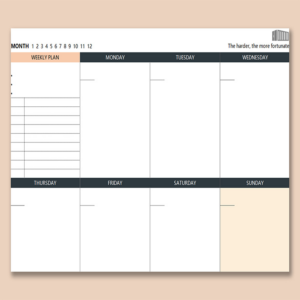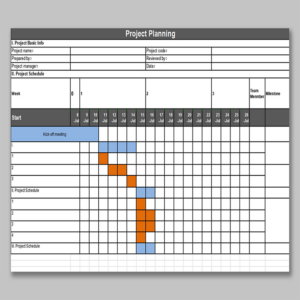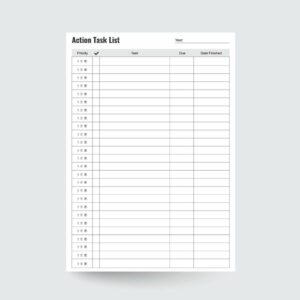Adoption of such a framework enhances accountability and minimizes potential misunderstandings regarding individual contributions. It facilitates efficient project management, enabling teams to identify potential bottlenecks and proactively address any challenges that may arise. Consistent monitoring via this framework supports on-time completion and higher quality outcomes.
task
Employee Weekly Task List Template
The utilization of such a tool offers several advantages. It promotes enhanced productivity by providing a clear roadmap for the week. Miscommunication is minimized through explicit task descriptions, leading to fewer errors and improved overall output quality. Progress monitoring becomes more streamlined, enabling timely interventions and resource allocation adjustments. Furthermore, it fosters a greater sense of responsibility and ownership among personnel.
Employee Task List Template With Metrics
Utilizing such a framework enhances transparency within teams, allowing all members to understand individual responsibilities and overall project status. This approach streamlines workflow, reduces ambiguity, and enables proactive identification of potential roadblocks. Furthermore, the data gathered through performance indicators offers valuable insights for continuous improvement and targeted training initiatives.
Edible Work Task List Template
The benefits of incorporating edible rewards into task management may include increased focus, particularly for individuals who respond well to immediate feedback. It can also introduce an element of gamification, making routine or monotonous tasks more appealing. Furthermore, this strategy can contribute to improved task completion rates and a more positive association with work, reducing procrastination.
Daily Task List Template With Time
Utilization of such a system yields numerous advantages. It facilitates improved time management, reduces procrastination, and fosters a sense of accomplishment through the systematic completion of assigned duties. Moreover, it allows for a visual representation of the day’s commitments, enabling better prioritization and resource allocation.
Daily Task List Template Outlook
Adopting this organizational tool can significantly enhance productivity through several mechanisms. These include improved time allocation by providing a clear visual representation of commitments, reduced stress associated with managing multiple duties, and greater accountability through the consistent tracking of progression. Furthermore, the readily available digital format facilitates easy editing, sharing, and updating of information, promoting better team collaboration and overall operational efficiency.
Daily Task List Template Doc
Employing a pre-designed format offers several advantages. It can promote enhanced time management, reduced stress levels, and increased productivity. Centralizing all planned actions in a single, readily accessible location allows for quick reviews, adjustments to priorities, and minimization of oversight risks. Furthermore, it provides a tangible record of accomplishments, contributing to a sense of achievement and facilitating performance evaluation.
Daily It Task List Template
The implementation of such a structured document offers several advantages. It enhances accountability by clearly assigning responsibilities, minimizes the risk of overlooking critical tasks, and promotes efficient time management. Furthermore, it facilitates standardized workflows, simplifies progress tracking, and supports streamlined communication amongst team members.
Construction Project Task List Template
Employing a predefined format for documenting these action items yields numerous advantages. It facilitates efficient planning, promotes effective communication among stakeholders, and enables accurate monitoring of project timelines and resource allocation. This approach also assists in identifying potential bottlenecks and mitigating risks, ultimately contributing to improved project outcomes and reduced costs.
Action Item Task List Template
Employing a consistent method for tracking assigned duties offers several advantages. It fosters clarity, minimizing ambiguity regarding who is responsible for what and when the work needs to be finalized. Moreover, it facilitates progress monitoring, enabling stakeholders to readily assess the status of each task. This transparency, in turn, allows for proactive identification and mitigation of potential roadblocks, preventing delays and keeping projects on track.









